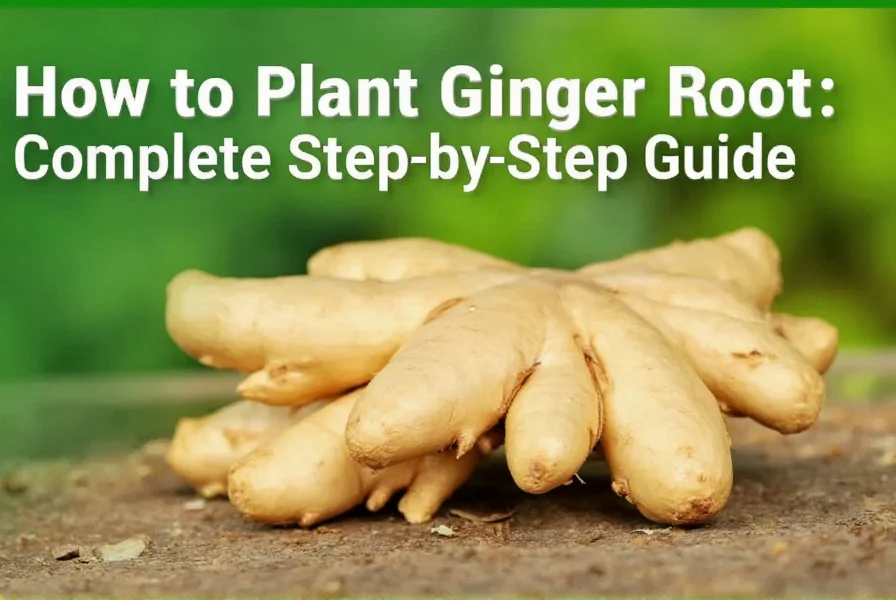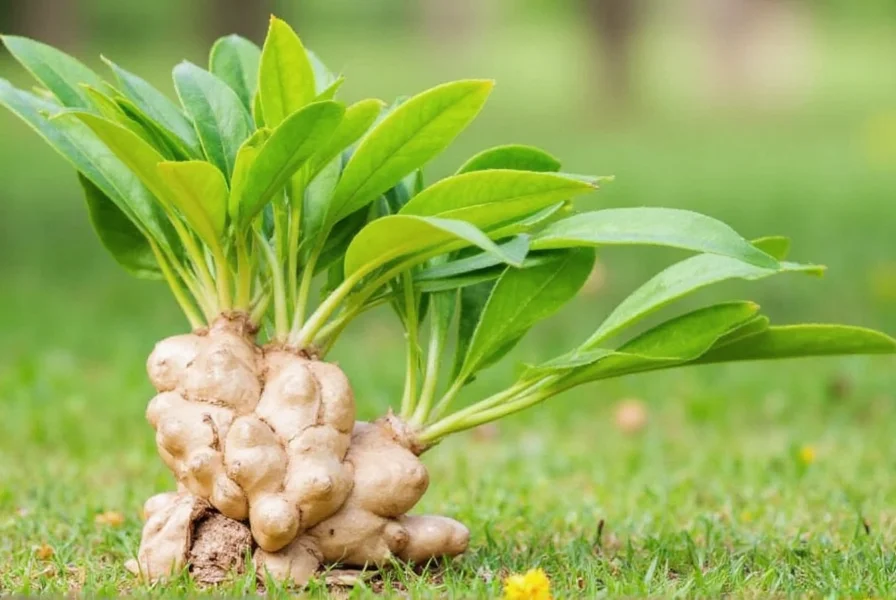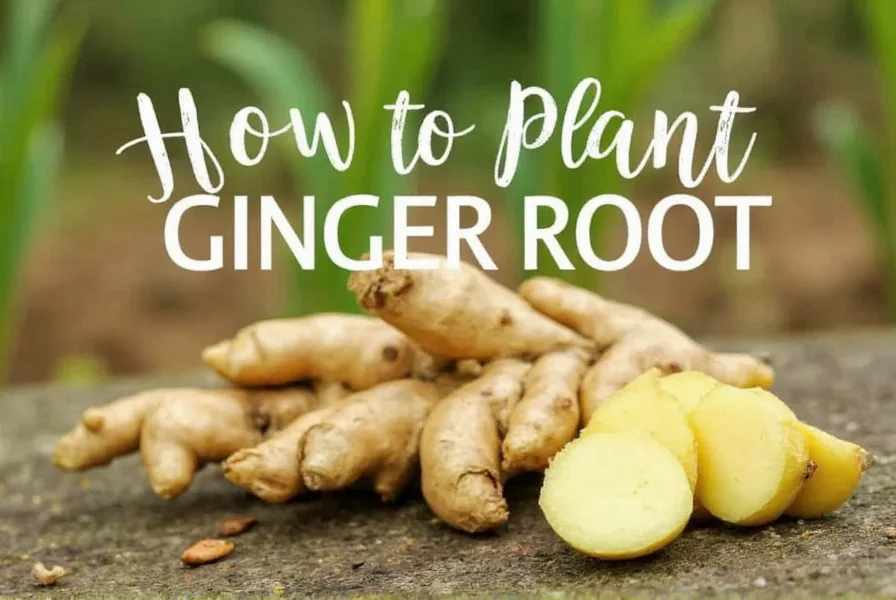Growing ginger at home is simpler than many gardeners realize, offering fresh, organic rhizomes for culinary and medicinal use. This tropical perennial thrives in warm, humid conditions but can be cultivated successfully in containers even in temperate climates. Understanding the proper techniques for planting ginger root ensures healthy growth and abundant harvests.
Essential Requirements for Planting Ginger Root
Before diving into the planting process, gather these essential elements for successful ginger cultivation. The right conditions significantly impact your how to grow ginger from store-bought root experience and overall yield.
Choosing Quality Ginger Rhizomes
Select plump, firm ginger roots with multiple visible eye buds (the small bumps where new growth emerges). Grocery store ginger often works well, though organic varieties avoid potential growth inhibitors. Look for roots with a smooth, tan skin without wrinkles or mold. Larger roots with multiple buds can be divided into sections, each containing 1-2 buds.
| Ginger Selection Criteria | What to Look For | What to Avoid |
|---|---|---|
| Size and Shape | Plump, firm sections with multiple buds | Thin, shriveled pieces |
| Surface Condition | Smooth tan skin, no wrinkles | Mold, soft spots, or wrinkles |
| Bud Visibility | Multiple visible eye buds | No visible buds or dried buds |
Optimal Soil Composition
Ginger requires well-draining, nutrient-rich soil with a slightly acidic pH between 5.5 and 6.5. Create an ideal growing medium by mixing equal parts garden soil, compost, and perlite or sand. This best soil for ginger planting combination prevents waterlogging while providing necessary nutrients. For container gardening, ensure pots have adequate drainage holes and use a high-quality potting mix amended with organic matter.

Step-by-Step Ginger Planting Guide
Follow these detailed steps for successful ginger root planting. This step-by-step guide to planting ginger rhizomes covers everything from preparation to initial care.
Pre-Planting Preparation
Soak your ginger rhizomes in lukewarm water for 12-24 hours before planting. This rehydrates the roots and encourages bud activation. For store-bought ginger that may have growth inhibitors, add a small amount of hydrogen peroxide to the soaking water. After soaking, divide larger rhizomes into 1-2 inch sections, ensuring each piece has at least one healthy bud.
Planting Technique
Plant ginger rhizomes 2-4 inches deep in the soil with the buds facing upward. Space multiple rhizomes 8-10 inches apart to allow room for growth. Cover lightly with soil and water thoroughly but avoid waterlogging. Ginger grows horizontally, so shallow planting encourages proper growth direction. For container planting, choose pots at least 12 inches deep to accommodate the spreading rhizomes.
Initial Care Requirements
Maintain consistent soil moisture without saturation during the first 2-3 weeks. Ginger prefers 1-2 inches of water weekly. Place planted ginger in a warm location (70-90°F) with indirect sunlight or partial shade. Avoid direct afternoon sun, which can scorch young shoots. Growth typically appears within 2-4 weeks, depending on temperature and ginger quality.
Ongoing Ginger Plant Care
Proper maintenance ensures healthy ginger development throughout its growing season. Understanding how to care for ginger plants after planting prevents common issues and maximizes yield.
Watering Schedule
Maintain consistent soil moisture, especially during active growth periods. Water when the top inch of soil feels dry, typically 1-2 times weekly. Reduce watering frequency as harvest approaches to encourage rhizome maturation. Overwatering causes root rot, while underwatering stunts growth. Mulching helps maintain moisture levels and regulates soil temperature.
Fertilization Strategy
Feed ginger plants every 4-6 weeks with a balanced, organic fertilizer (10-10-10 NPK). During active growth, switch to a fertilizer higher in potassium to encourage rhizome development. Compost tea provides gentle, consistent nutrition. Avoid high-nitrogen fertilizers, which promote excessive leaf growth at the expense of rhizome development.
Pest and Disease Management
Ginger generally resists most pests but can attract aphids, spider mites, and root knot nematodes. Prevent infestations with neem oil sprays and proper air circulation. Root rot from overwatering is the most common disease issue. Ensure proper drainage and avoid wetting foliage when watering. Rotate planting locations every 2-3 years to prevent soil-borne diseases.
Harvesting Ginger Properly
Knowing when to harvest ginger rhizomes determines flavor intensity and storage potential. Ginger requires 8-10 months of growth before full maturity.
For mature ginger, wait until the leaves yellow and die back naturally, typically 8-10 months after planting. Carefully dig around the plant to harvest the entire rhizome cluster. For partial harvests, gently remove outer sections while leaving the main plant intact. After harvesting, cure ginger by air-drying for 2-3 days before storing in a cool, dark place or refrigerating.

Troubleshooting Common Ginger Growing Problems
Address these frequent issues to ensure successful ginger cultivation:
- No growth after planting: Check if ginger was planted with buds facing downward or if temperatures were too cold. Ginger requires warmth to sprout.
- Yellowing leaves: Often indicates overwatering or poor drainage. Reduce watering frequency and ensure proper soil aeration.
- Small rhizomes: May result from insufficient nutrients, overcrowding, or harvesting too early. Amend soil with compost and allow full growing season.
- Rhizome rot: Caused by waterlogged soil. Improve drainage and avoid overhead watering.
Extending Your Ginger Growing Season
In cooler climates, grow ginger as a seasonal container plant. Move pots indoors when temperatures drop below 50°F. Reduce watering during dormancy but don't let soil completely dry out. Resume regular care when temperatures warm in spring. This how to grow ginger in containers year-round approach extends your harvest window and protects plants from frost.











 浙公网安备
33010002000092号
浙公网安备
33010002000092号 浙B2-20120091-4
浙B2-20120091-4